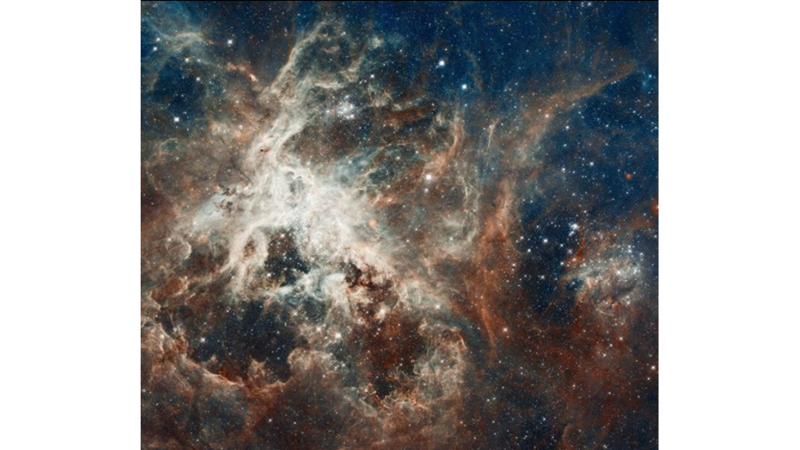The Tarantula Nebula, a star-forming region, has been caught in Hubble's net many times at many wavelengths of light. This galaxy, home to the Large Magellanic Cloud, is one of the Milky Way's closest companions, a relatively close galaxy orbiting our galaxy and located about 160,000 light years away. The Tarantula Nebula is the brightest star nest in our ‘Local Group’ galaxies and contains some of the largest and hottest stars known.
Image descriptions/credits:
1 - Nested clouds of light green and brown dust and gas cover the entire image. Numerous white stars decorate the image. (Credit: NASA, ESA, D. Lennon and E. Sabbi (ESA/STScI), J. Anderson, S. E. de Mink, R. van der Marel, T. Sohn and N. Walborn (STScI), N. Bastian (Excellence Cluster, Munich), L. Bedin (INAF, Padua), E. Bressert (ESO), P. Crowther (University of Sheffield), A. de Koter (University of Amsterdam), C. Evans (UKATC/STFC, Edinburgh), A. Herrero (IAC, Tenerife), N. Langer (AifA, Bonn), I. Platais (JHU) and H. Sana (University of Amsterdam))
2 - Thin, nebulous red clouds extend from the lower left of the image. Above and to the right, the dark background of space can be seen through the sparse nebula. To the left and in the corner are many layers of brightly coloured gas and dark, obscuring dust. In the same corner a cluster of small, bright blue stars expands across the image. Many much smaller stars fill the background. (ESA/Hubble & NASA, C. Murray, E. Sabbi; Acknowledgements: Y.-H. Chu)
3 - Orange-white and bluish-white stars litter the black background of space. Light blue clouds and thicker white clouds are visible in the lower half of the image. (ESA/Hubble & NASA)


 Nielawore
Nielawore











Yorumlar
Çok güzel değiller mi?
Yorum yazmak için lütfen giriş yapınız